William of Normandy's invasion of England, the Battle of Hastings and the castles William built to protect his throne.
Harry: What shall we check out today, Fatima?
Fatima: I think we should go right the way back to some Knights in armour. Get an idea of what knights were like and what kind of castles they lived in.
Harry: Okay, let's do it. Excuse me, are you in a virtual reality museum guide?
Sally: Yes I am. Welcome.
Harry: Could you show us where some of the knights are?
Sally: Okay, sure. Let's go right to the end of the corridor and find out about William the Conqueror.
Fatima: Great. What's that castle?
Sally: That's Windsor Castle.
Harry: Look, that's Queen VictoriaâŠ
Fatima: Queen Elizabeth IâŠ
Harry: Henry VIIIâŠ
Sally: Here we are, William the Conqueror - born in 1028, around a thousand years ago.
Harry: I like his crown.
Sally: And that's one of his castles in France behind him.
Fatima: Let's go take a look.
Harry: Okay, let's put our virtual reality headsets on, so you can see what things were really like and find out more.
Sally: William was very young when he became the Duke of Normandy. This was a very important ruler in France. He had lots of enemies who wanted to take over as Duke, so he had to work hard to make sure he could carry on being in charge.
Fatima: So why is he famous?
Sally: William was related to the King of England, who had just died. So William thought he should be the next King of England. But a man called Harold was actually crowned the next King. So there was trouble ahead.
Fatima: So there were two people who wanted to be King? William and Harold.
Sally: Yes, it was a dangerous situation. Two people wanted to be King, but you can only have one King of England.
Harry: So what did William do?
Sally: Well, he had a huge decision to make: whether to fight Harold in a battle or not. But gathering an army of soldiers and paying for armour and horses and ships was very expensive. And then there was the risk that he might lose and be killed.
Fatima: Wow!
Sally: So he thought about it and finally came to a decision.
Harry: What was it?
Sally: He was going to risk everything by taking his army to England to fight Harold for the throne of England.
Harry: Oh, look! He's got hundreds of ships to take his army across. It must have been so exciting.
Sally: Yes and scary. Many people died in battle and so it was very risky. On the 14th of October 1066, they fought a very famous battle - the Battle of Hastings. William's army met Harold's armyâŠbut during the fighting Harold was killed. Some people say he died by an arrow to the eye. But the truth is, we don't actually know. So William's army won the battle and he became the new King.
Fatima: So then he was King of England?
Sally: Yes. But being King wasn't easy. It was dangerous and William had lots of enemies - people who didn't want him to be King. So he started to build castles.
Harry: Why castles?
Sally: Castles were the best way to protect yourself and your people. They had strong walls and were built to be very hard to attack. They were built often on high ground and often in places that would allow the King to send knights and soldiers to nearby places that were important to control.
Fatima: Are any of his castles still standing today?
Sally: His most famous castle is called the Tower of London and it's still there today.
Harry: Wow! It's about a thousand years old.
Sally: That's right.
Fatima: Can we find out more about the castle?
Sally: Yes, but not right now. You'll have to wait until another time. It's super interesting. People were put in prison thereâŠpeople escaped from thereâŠand there are all sorts of precious jewels and crowns kept there.
Harry: Wow, that sounds exciting! I can't wait to find out more!
William the Conqueror
The animation tells the story of William the Conquerorâs invasion of England in 1066 and its aftermath.
It starts with the background to the invasion including the claims to the English throne made by both Harold of Wessex and William Duke of Normandy. It continues with Harold's accession to the throne and William's subsequent decision to invade.
The Norman army wins at The Battle of Hastings and William is crowned King of England shortly after.
William then sets about protecting his throne by building a number of impressive castles - the best known of which is the Tower of London.
Further resources
Download / print the Notes including illustrations, photos and worksheets (pdf)
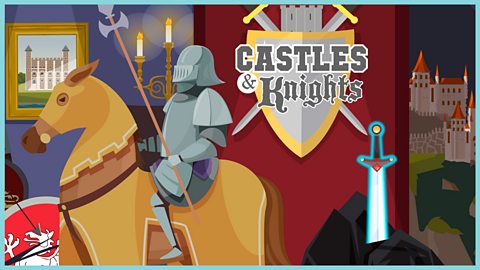
Click to display the image full-size

Click to display the image full-size
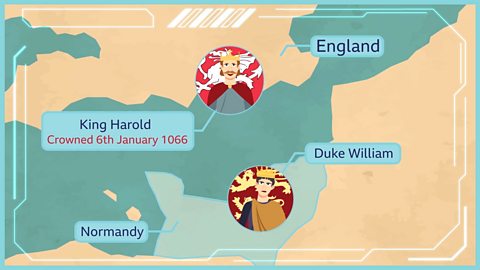
Click to display the image full-size
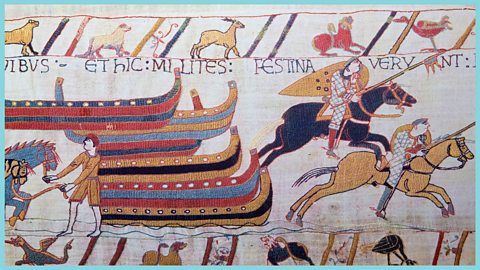
Click to display the image full-size
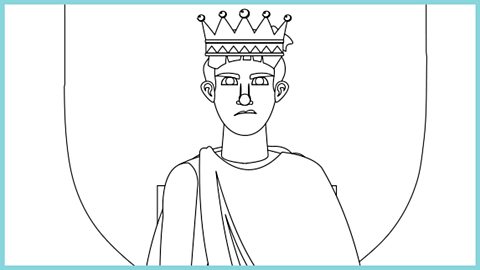
Teacher's Notes
Before the video
The teacher could set the scene for what is about to take place using a chronology activity. The class could be asked to stand up and spin around to go back in time - similar to the characters in the video.
They could first go back 10 years and the pupils could be asked what they can see.
They could be asked what is similar / different about the past compared to today.
They could repeat the time travel for 100, 1000 and 10,000 years. This would be supported if the teacher could use images / props / artefacts to prompt pupil thinking.
The teacher could then show some images of medieval Britain so that the pupils have an idea of what the world would have been like when the story takes place.
During the video
During the video, the teacher can stop and ask pupils to think about what they would do in each circumstance.
Would they invade? Why? Why not?
After the video
After watching the video the teacher could use this as a role-play / story-telling activity. Pupils can recreate what they saw in the video and perform their retellings for the class.
The class could ask questions of each character.
The teacher could show a picture of the Bayeux Tapestry and explain that 1000 years ago, many people could not read, so people told stories using images instead.
The pupils could try to retell the story as a âtapestryâ, which would link to the NC objective in Art of âusing drawing,painting and sculpture to develop and share their ideas, experiences and imaginationâ.
This film is relevant for teaching History at KS1 in England, Wales and Northern Ireland and 1st Level in Scotland.
More from this series
The Tower of London. video
Fatima and Harry explore one of the most famous castles in the UK: the Tower of London.
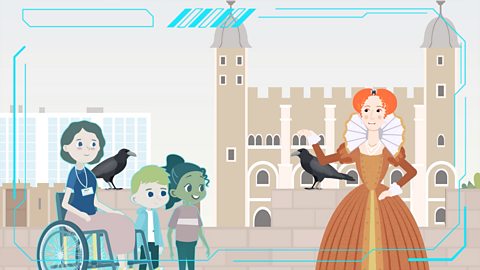
The Features of a Castle. video
Fatima and Harry hear about the key features of a castle - such as thick walls, towers, drawbridges and moats.
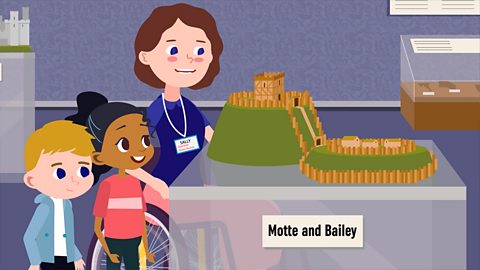
Famous Sieges. video
Fatima and Harry learn how castles defended against attack by hearing the stories of two famous sieges.

See also...
1066: The year of three kings. video
A short animation about Harold II and his defeat by William of Normandy.
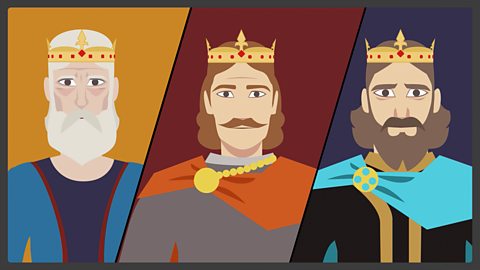
Song: 'The end of the Anglo-Saxon dynasty' video
A song marking the end of the Anglo-Saxon dynasty at the Battle of Hastings.

The Anglo-Saxons. collection
Seven animations about the Anglo-Saxons, including the Battle of Hastings.
